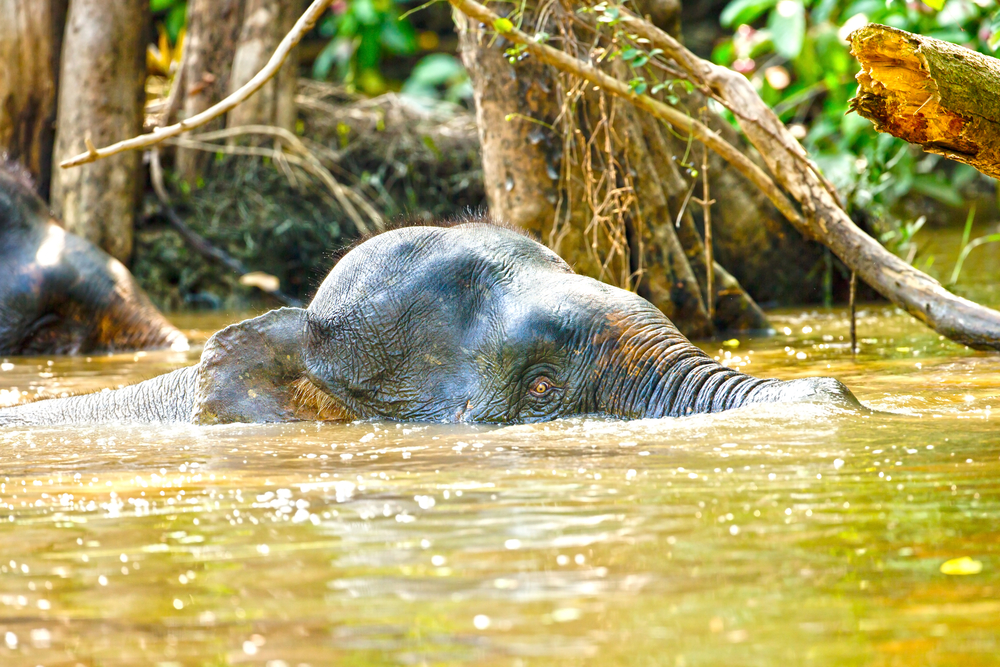
Think of elephants and you probably picture majestic herds lumbering across an African plain. That’s unsurprising; there are still some 700,000 elephants on the continent, despite being down from as many as five million barely a century ago. The African elephant (Loxodonta africana) is the poster child for conservation, garnering millions of dollars in pledges every year and is surely one of the most recognisable mammals on Earth.
Meanwhile, hidden away in the jungles of Borneo, there is a sister species quietly slipping into extinction.
The Bornean pygmy elephant (Elephas maximus borneensis) has been something of an enigma since it first became known to science in the 19th century. Closely related to the Asian elephant that lives across Southeast Asia, recent genetic research suggests that the Bornean subspecies has been evolving independently for some 300,000 years.
Despite its size, rainforest elephants are surprisingly hard to study. Population estimates often rely on surveys that count dung piles, rather than trying to find the elusive animals themselves. Because of this, there is often a significant margin of error, but all things considered there are probably less than 1,500 Bornean pygmies left in the wild, mostly in the north east of the island.
The main threats to the Borneo elephant are drastic habitat loss and fragmentation, with the island having lost some 80% of its forests since 1950. As humans expand, this has brought local communities into increasing conflict with the elephants resulting in injuries and deaths on both sides.
Elephants require substantial areas of habitat to maintain viable populations. Recent research by the WWF, Sabah Wildlife Department and others used radio trackers to discover that herds occupied 250 to 400 sq. km in high quality forest, but that this almost doubled where the forest was fragmented.
Bornean elephants, like all pachyderms, are long-lived and extremely slow to reproduce, with six years between calves common (and a gestation that lasts almost two years—the longest of any mammal!) This means that any effective conservation programme has to be longterm too, and it could take decades for the population to recover.
Despite the bleak outlook, there is progress. Three US zoos recently announced the Borneo Elephant Zoo Alliance, a new initiative that aims to support conservation in the Lower Kinabatangan flood plain, home to the largest surviving population, with at least $100,000 per year for the next three years. Other species depend on this conservation success too, such as the little known Bornean rhinoceros and wild banteng, which also require large areas of intact forest.
Eventually though, the fate of the Borneo pygmy elephant will surely depend on one thing—people simply knowing they exist.

